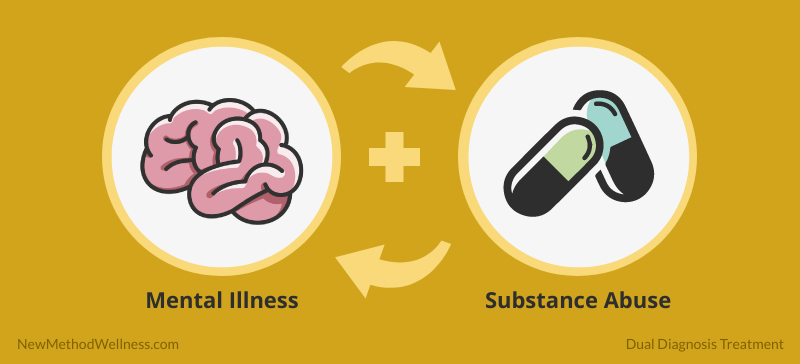Dual Diagnosis
What is dual diagnosis?
As the name suggests, dual diagnosis is when a person is diagnosed with two disorders at the same time. It occurs when a person has a combination of substance use disorder and mental illness.
Dual diagnosis is becoming more and more common in the United States as rates of both of these conditions rise. According to a survey conducted by the Substance Abuse and Mental Health Services Administration (SAMHSA), more than 21 million people have a substance use disorder today. On top of that, the National Institute of Mental Health states that nearly one in five U.S. adults lives with a mental illness. These illnesses vary in degrees of severity, but they are still common among much of the population.
Since both mental illness and substance use disorder are on the rise, it’s no wonder that there is some overlap where people experience both. However, these disorders often feed one another. Substance abuse can create conditions where a mental illness occurs and vice versa.
We can see how this plays out in some of the common combinations of dual diagnosis.

Examples of dual diagnosis
Dual diagnosis comes in many forms. This is because there are multiple different types of both mental illnesses and substance use disorders. Below are some common combinations of co-occurring disorders that we see in patients.
Alcoholism and depression
Alcoholism and depression are conditions that often occur simultaneously. One is developed before the other, but it is not always clear which came first. Sometimes, people who are suffering from depression use alcohol as a coping mechanism for their mental illness. Other times, a person’s excessive alcohol intake could lead to eventual feelings of depression.
In either case, alcoholism and depression can form a vicious cycle that can be difficult to escape. A person with these co-occurring disorders may experience the following symptoms:
• Excessive drowsiness
• Withdrawal from social situations
• Changes in appetite
• Irritability
• Detachment from surroundings


Prescription drug addiction and anxiety
Anxiety disorder is when feelings of intense fear and distress keep a person from performing everyday activities. Over 40 million adults in the U.S suffer from anxiety. Doctors often prescribe drugs like Ativan, Xanax, Klonopin, or Valium to treat anxiety disorders. These prescription medications can be very beneficial and help patients live normal lives.
However, these medications can also be highly addictive. When a patient feels like they can no longer manage their anxiety symptoms, the potential for abusing these substances increases.
How dual diagnosis is treated
Patients who have both a mental illness and substance use disorder require careful treatment. Ideally, the patient would not only receive treatment for one of the conditions. Rather, both disorders would be treated simultaneously to increase the effectiveness of both treatments.
Dual diagnosis treatment may include behavioral therapy, medication-assisted treatment, and addiction counseling. A drug rehab facility provides inpatient programs where patients can receive all of these different treatment types at a single safe facility.
About Us
We are a remote and in-person mental health practice that provides individual outpatient, substance use group therapy and family therapy services to children and adults. We will provide you with a person-centered and therapeutic experience.
Links
Contact Us
(804) 715-7022
205 Temple Avenue, Colonial Heights, VA 23834
